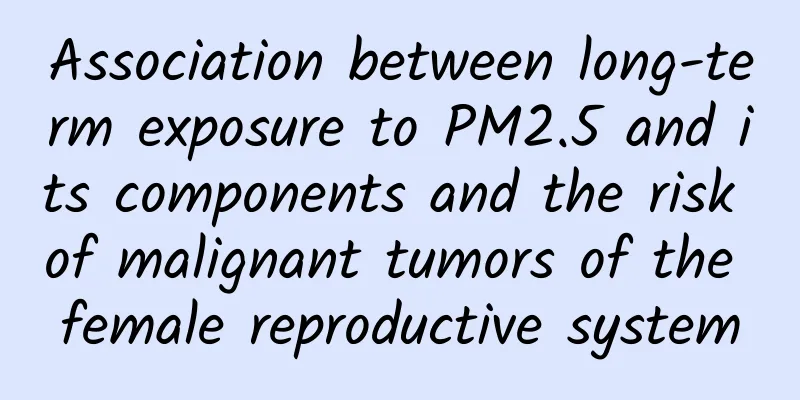Association between long-term exposure to PM2.5 and its components and the risk of malignant tumors of the female reproductive system

|
Female reproductive system malignancies have become one of the major health threats to women, affecting millions of women worldwide. Fine particulate matter (PM2.5) is a recognized primary carcinogen, and there is clear evidence that it causes a variety of cancers. However, in countries and regions with high levels of air pollution, research on the impact of PM2.5 exposure on the risk of female reproductive system malignancies is relatively scarce. This knowledge gap limits the formulation and implementation of relevant prevention and control strategies. Recently, Professor Gao Min from the Department of Gynecological Oncology at Peking University Cancer Hospital, Researcher Xue Tao from the Peking University School of Public Health, and Professor Ji Jiafu from Peking University Cancer Hospital and Beijing Cancer Prevention and Control Research Office jointly published a research paper in Medicine Plus. Based on the survey data in Beijing of the "National Urban Cancer Early Diagnosis and Treatment" project, they conducted a prospective cohort study to explore the association between long-term exposure to PM2.5 and its components black carbon (BC), ammonium (NH4+), nitrate (NO3−), organic matter (OM) and sulfate (SO42−) and the risk of malignant tumors of the female reproductive system, and identified the key components. This study included 85,500 female participants in the Beijing area of the "National Urban Cancer Early Diagnosis and Treatment" project from 2013 to 2019, using concentration data of PM2.5 and its components provided by the China Atmosphere Near Real-time Tracking Dataset (TAP) as exposure indicators, and the Cox proportional hazard regression model was used to evaluate the association between exposure and disease risk, and quantile g calculation and SHapley additive explanatory model were used to identify key components. The results showed that long-term exposure to PM2.5 was associated with an increased risk of female reproductive system malignancies, of which SO42− and BC were important components. The results of this study enrich the evidence of the association between air pollution and female reproductive system malignancies in highly polluted areas, and will also provide a scientific basis for the subsequent formulation of health-oriented air pollution intervention measures. Association between PM2.5 and its components and the risk of malignant tumors of the female reproductive system Importance of PM2.5 components For more details, please read the full article: Guo J, Yang L, Kang N, et al. Associations of long-term exposure to fine particulate matter and its constituents with gynecologic cancer incidence: A prospective cohort study from Beijing. Med Plus. 2024;1(4): 100058. doi: 10.1016/j.medp.2024.100058 |
<<: Can we drink overnight tea? Is it not only toxic but also carcinogenic? Here comes the truth →
>>: [Medical Q&A] I have ringworm in my private parts. How can I treat it despite the embarrassment?
Recommend
Girl's belly is bulging and hard
I believe that most pregnant mothers will encount...
What is the situation of leucorrhea suddenly turning brown?
If the color of leucorrhea suddenly changes, you ...
Can I use heat to treat breast hyperplasia?
Breast hyperplasia is a relatively common breast ...
What to do if you have constipation after a normal delivery
During a normal birth, episiotomy is mainly perfo...
What are the dangers of female adnexal cysts?
Adnexal cysts are a relatively common gynecologic...
What type of underwear is good for small breasts?
In today's social life, having a good figure ...
How to prepare for pregnancy with cold uterus
Many women, in order to be beautiful, often expos...
How to distinguish between breast and lump?
Breasts are one of the most important organs and ...
@Parents: These Olympic events are not suitable for your children!
"Did you watch yesterday's XX game?"...
I have redness in my stomach, like menstrual cramps
Pregnancy is a very happy thing for many families...
What are the ways to prevent dysmenorrhea?
Dysmenorrhea causes a lot of pain to many women, ...
The first "miracle drug for myopia" in China has been approved for sale! Please note that it can't be used just because you are myopic
The latest information on the official website of...
Can breast nodules generally be eliminated?
In the face of the appearance of breast nodules, ...
Causes of menopausal irregularities
Menopause is quite damaging to some female friend...









